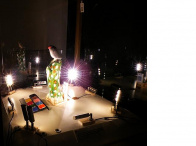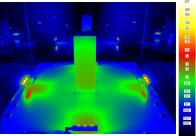Light and conservation
It is known that environmental conditions deeply affect the conservation of museum objects. Among the various environmental factors that are potentially hazardous, light is certainly one of the most dangerous. By contrast, lighting is of the utmost importance for guaranteeing the best enjoyment of works of art. Consequently, a continuous compromise between care of the objects and display requirements has to be achieved in setting up exhibitions.
At present, the use of Solid State Lighting (SSL) in museum interior design is flourishing. In particular, LED luminaries are widely used inside museum showcases for their small dimensions. Nevertheless their impact on conservation and perception is not always well known by lighting designers and conservators, due to the novelty of this technology and the differences from traditional solutions.
The research program is meant to contribute to:
- design and evaluation of lighting systems optimized for conservation and visual requirements. In particular, the potentials and drawbacks of the use of LED light fittings in museum showcases is assessed by means of both objective measures (luminance based images to assess light distribution and glare, colour rendering measurement, etc.) and subjective surveys;
- assess photo-induced damage on light sensitive dyes by LEDs with different correlated color temperature (ranging from 2700 K to 7000 K) and driving methods (DC or PWM current operation).


People
- CHIARA AGHEMO
- ANNA PELLEGRINO
